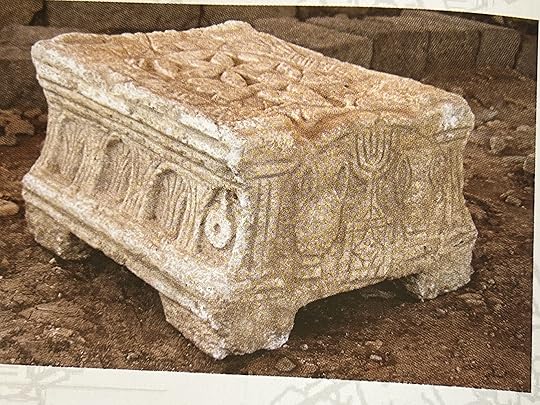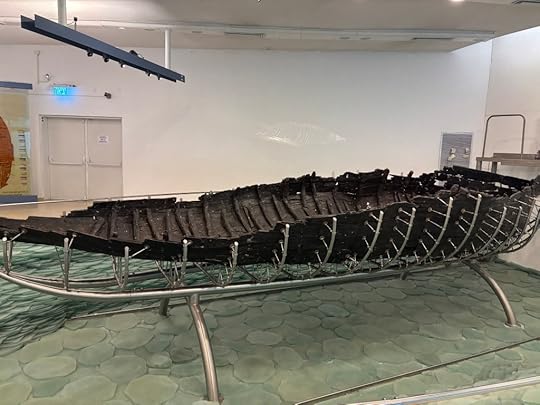The Magdala Experience

Whenever a building project is initiated in Israel, the Antiquities Authority is empowered by law to step in and undertake archaeological work. In 2009, when work began on the hotel and guest house beside Migdal in Galilee the ancient settlement of Magdala was revealed. The thriving fishing village dating back to the Herodian (Graeco-Roman) period was purportedly the birthplace of Mary Magdalene, who was rescued by Jesus and became one of his principal disciples.
The archaeological excavations also revealed an ancient synagogue, dating from the first century CE, as well as private houses and a market for the salting and sale of fish. The archeological park is integrated into the Magdala Hotel, a beautiful contemporary building, where we were able to enjoy the atmosphere and surroundings of Mount Arbel, Lake Tiberias (Sea of Galilee) and the verdant Galilee itself.
This site seems to represent the crossroads between early Christianity and Jewish life, and may well have witnessed Jesus addressing local communities, as it is known that he associated with the local fishermen, and even preached from their boats. In 1986 the unusually low level of Lake Tiberias revealed a 2,000 year-old fishing boat, which has been carefully preserved and is now on display in the specially-built Yigal Allon Centre in nearby Kibbutz Ginosar. At the time of the Jewish Revolt against the Romans in 67 CE it is reported by Josephus Flavius, that the Jews of Migdal took to their boats on the Sea of Galilee in an attempt to escape the Roman soldiers, but there was no wind to fill their sails and so they were trapped and slaughtered by the Romans, and according to Josephus ‘the sea was red with blood.’
One of the most important finds in the excavated synagogue is the unique Magdala stone, which is believed to have served as a plinth on which the Torah scroll was placed to be read. On its sides are carved representations of objects from the Temple in Jerusalem, among them the seven-branched menorah and rosettes which may refer to the veil before the Holy of Holies.
A separate building set in the hotel’s landscaped grounds is known as Duc in Altum and contains several small chapels commemorating various aspects of the life of Jesus. Its name comes from an expression meaning ‘Go into the Depths’ that Jesus is supposed to have told his fishermen disciples (though Latin was not the language that Jesus is presumed to have spoken). Each chapel contains an expressive mosaic depicting an event described in the New Testament. A small group of Catholic scholars is attached to the guest house, where the Magdala Learning Institute is located. The lay priests and celibate men and women of the community are aided by young volunteers from various countries who support the Institute’s online communications system.

The hotel building was designed by local architect, Rannin Nakhleh-Khoury, who has her office in Jerusalem, in collaborated with Mexican interior designer Sofia Aspe. The all-female design teams have produced a building that is both aesthetically pleasing and comfortable, affording a view towards the Kinneret from the spacious lobby and the grounds, and a view over the gardens from the dining room. I was struck by the attention to comfort and aesthetics throughout the hotel, with plenty of toilets tucked away discreetly in niches, well-built doors to rooms, cutting off almost all noise from outside, and pleasing art work in the rooms and public spaces. Along one of the corridors a delicate mural of leaves and flowers, entitled ‘The Garden of Joy,’ has been painted in collaboration with visiting guests. There is a toilet nearby, which I have dubbed ‘The toilet of joy.’
We spent a very enjoyable week at the hotel, which provides an excellent and varied cuisine, obliging staff, a charming swimming pool and all the wonders of this unique archaeological and historical site.



